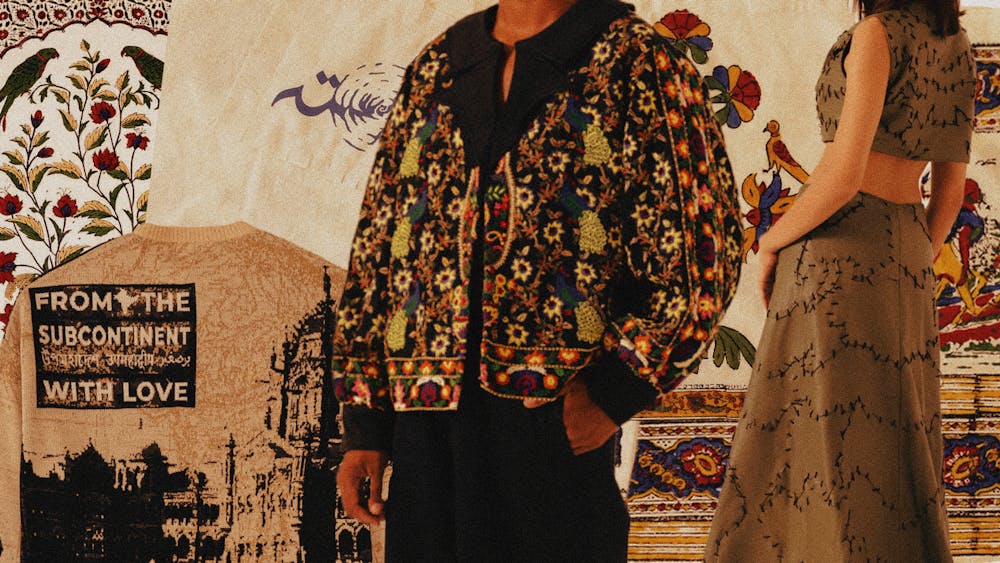The fashion side of TikTok and Instagram is booming. There are countless tutorials on how to incorporate color into your wardrobe like a Scandi girl, thousands of get–ready–with–me videos featuring French style button–downs and flared jeans, and endless clips of outfits of the day on the streets of New York City. In mainstream media, the West is synonymous with exemplary taste—NYC, Paris, London, and Milan are exalted as the world’s fashion capitals, and Western designers are worshiped for their pioneering collections. But why don’t we ever seem to hear about the groundbreaking style choices of the rest of the world? Why is social media constantly bombarded with posts romanticizing Western fashion, but rarely with those recognizing global fashion?
Even though many of the clothes we cherish tell us they were made in India, Pakistan, or Bangladesh, people from this part of the world don’t usually come to mind when we hear the words ‘fashionable’ or ‘trendy.’ Colonialism has left a Eurocentric world in its wake. ‘The West and the Rest’ idea of Western superiority is out in full force. This has led to ignorance, and subsequent underestimation, of what South Asian fashion is and can be.
When brown people are constantly subjected to an internet that idolizes and reveres style that is largely attributed to white people, it’s not surprising that they too want to look like them. In South Asia, there is an obsession with being as fair and pale as possible—it was only in 2020 that the iconic skin lightening cream, Fair & Lovely, finally changed its name to Glow & Lovely (although they’re still selling the same product). There is also a growing movement among young South Asians to deem one another a burger or a coconut (‘brown on the outside, white on the inside’), a slang term meant to embarrass the other person for trying to become too Western. But with the prevalence of social media idealizing all that is the West, it is difficult not to become a coconut or burger. After all, young South Asians simply aren’t exposed to the vibrant and flourishing fashion of their own community.
For centuries, fashion has been central to South Asian culture. From the embroidered draped garments of the ancient Indus Valley Civilization to the colorful and flowing lehenga choli worn today, South Asians have celebrated fashion, using their outfits to tell stories of their heritage, traditions, and identities. Today, the South Asian fashion world is growing at an unprecedented rate, with brands proudly showcasing local arts and skills to the rest of the world.
Rastah, a Pakistani streetwear label started by Zain Ahmad, aims to showcase South Asian artisanship in its designs by narrating “tales of experiences, reflections, and resilience in a world that at times underestimates the prowess of a Pakistani designer.” It promotes the intricate and detailed process of what goes into creating a collection: artisans weaving fabrics on a traditional Pakistani handloom, printing using hand–carved wooden blocks, and gingerly embroidering millions of tiny beads by hand.
Rastah’s latest collection, Volume X, is an ode to traditional Pakistani clothing, with many of the silhouettes based on customary Pakistani styles. Through the language of fashion, Rastah also honors its artisans, focusing on just how much goes into creating one single piece. Their "Barsaat" Hand Embroidered Silk Jacket, for instance, is entirely hand–embroidered, with each stitch and embellishment taking numerous days to perfect.
Tigra Tigra is a Los Angeles–based textile and garment studio that partners directly with artisan–owned businesses in Gujarat to produce their designs. It honors traditional South Asian materials and techniques in its designs, featuring each piece’s story on its website: Its Knot Flowers dress, for instance, is hand–embroidered, hand–woven, and made of Mashroo, one of the oldest Indian textiles.
The artisans that Tigra Tigra work with also determine the price for every garment based on the work put into creating the clothes and fair wages. This is a much–needed policy due to the prevalence of poor working conditions and pay in South Asia. In 2013, the Rana Plaza factory in Dhaka, Bangladesh collapsed and killed 1,138 people. Numerous global fast fashion brands were revealed to be produced in the factory. Thus, it is an essential step that Tigra Tigra is taking, breaking down the hierarchy of the fashion industry and making it more equitable.
From paying homage to the artisans who put blood, sweat, and tears into creating a single garment to making sure that every piece of clothing tells a story, South Asian fashion brands, along with those from countless other non–Western countries, are on the rise, revolutionizing the fashion industry with their unique ideas. In a world where fashion really means European and American fashion, it is crucial for us to integrate the rest of the world and their special ideas into the fashion world. Imagine just how much more exciting and exhilarating that would be.

